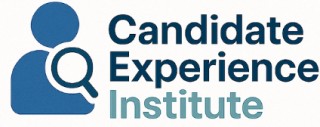The Interconnection of Performance Management and Recruitment
Understanding how performance management intersects with recruitment is crucial for any organization aiming to enhance its candidate experience. Performance management systems are designed to evaluate, manage, and improve employee performance effectively. This process supports the overarching goals of the organization and ensures alignment between managers, employees, and business objectives.
The performance management approach is not limited to existing employees; it plays a significant role right from the recruitment phase. A clear performance management plan aids organizations in identifying and attracting the right talent. Establishing well-defined performance expectations upfront helps in setting smart goals that align with the organization’s strategic objectives, hence enhancing the recruitment process.
When a company articulates its performance expectations transparently during the hiring process, it sets a precedent for clarity and mutual understanding. This can significantly bolster candidate engagement, as prospective employees are more likely to feel motivated and connected with an organization that articulates clear goals and provides a roadmap for career development.
Furthermore, incorporating performance planning into hiring strategies supports the transition from candidate to employee. It ensures that new hires are not only aligning with the company’s immediate needs but are also placed in roles where they can grow and thrive. Building a solid foundation for new employees with clear performance planning helps reduce turnover rates and cultivates a productive work environment.
For a deeper dive into enhancing candidate experience, particularly through prehire assessments, you can explore more
here. This resource delves into integrating performance management into the candidate's journey effectively, ensuring a seamless transition from initial contact to a well-engaged employee.
Defining Core Components for Success
Developing an effective performance management plan hinges on incorporating several key elements that collectively enhance the overall candidate experience within the organization. A well-rounded system helps align employee performance with the company's strategic objectives. Here are the essentials to consider:
- Goal Setting and Alignment: Objectives should be clear, achievable, and aligned with the company's broader business goals. Employing SMART goals (Specific, Measurable, Achievable, Relevant, Time-bound) can ensure that employee goals are not only attainable but also contribute directly to the overarching organizational strategy.
- Frequent Performance Evaluations: Conducting regular performance reviews instead of relying solely on annual evaluations helps maintain consistent feedback loops. This process should include both formal check-ins and informal, ongoing conversations between managers and employees to track and guide progress effectively.
- Constructive Feedback Mechanisms: An effective plan establishes channels for constructive feedback, which fosters a culture of learning and development. Managers should be trained in delivering feedback that is not just corrective, but also motivational, helping employees identify areas for growth while acknowledging their successes.
- Development Opportunities: Incorporating tailored training programs and professional development initiatives within the performance management process supports employee career growth. Providing employees with pathways for advancement can significantly enhance engagement and satisfaction.
- Assessment of Employee Performance: Performance evaluations should be fair and based on well-defined metrics. Utilizing comprehensive performance assessments ensures objectivity and fairness, encouraging continuous improvement.
An effectively crafted management plan is integral in facilitating a harmonious and productive environment where both employees and the organization can thrive. Continuous improvement and engagement should be paramount in every step of the performance planning. For more insights on how to refine and measure the effectiveness of these components, read more
here.
Integrating Feedback Loops for Continuous Improvement
Implementing Continuous Feedback Mechanisms
Enhancing the candidate experience through performance management is not solely about establishing goals and setting up annual reviews. Modern organizations recognize the invaluable role of integrating continuous feedback loops into their performance management strategies.
Creating a robust feedback mechanism involves a clear and consistent process for providing employees with constructive feedback throughout the year. This approach helps in aligning both business objectives and employee goals to ensure a smooth and effective performance management system. Regular check-ins between managers and employees foster an environment where feedback is not just an annual event but part of an ongoing dialogue, enhancing employee engagement and development.
These feedback sessions offer a platform to discuss not only job performance but also personal development goals. This is vital as it allows employees to proactively manage their careers and helps organizations in talent management by identifying emerging leaders within their ranks.
Incorporating this continuous feedback into the annual performance review process creates a more dynamic and responsive management plan. It allows for real-time adjustments and helps in refining the performance planning process, ensuring that SMART (Specific, Measurable, Achievable, Relevant, Time-bound) goals are effectively communicated and pursued by all parties involved.
By maintaining an open line of communication, organizations can ensure that their employees are aligned with the company’s wider goals, fostering a cooperative and motivated workplace culture. Understanding
the role of personal attributes questionnaires in candidate experience can further aid in selecting individuals who are more likely to thrive in such a feedback-rich environment, ultimately contributing to an enhanced candidate experience.
Leveraging Technology to Enhance Candidate Experience
Embracing Technological Solutions for Superior Candidate Interaction
In today's fast-paced business environment, leveraging technology is essential to improve candidate experience, especially within performance management systems. With the right tools, organizations can streamline their processes and ensure a seamless interaction at every stage of the recruitment journey.
To begin, implementing a robust performance management system can simplify the way feedback and evaluations are collected and reviewed. With digital platforms, managers can efficiently set smart goals and track employee progress, aligning individual contributions with company objectives. This also allows for detailed performance evaluation and goal setting, ensuring that employees are aware of the expectations and how they fit into the broader organization plan.
Furthermore, technology helps facilitate continuous communication between managers and employees, making regular check-ins more effective. These interactions are crucial for providing constructive feedback and adjusting goals throughout the year. A well-integrated system can automate scheduling, send reminders, and maintain a historical record of all interactions, aiding in consistent talent management and employee development.
Another advantage of utilizing technology is the enhanced ability to adapt and refine performance planning according to ongoing business needs. With real-time data and analytics, companies can adjust strategies dynamically, ensuring that the annual performance review process is not only a formality but a valuable tool for organization growth.
Technology, when used effectively, can lead to a more transparent and engaging candidate experience. Candidates appreciate a system that values their development and provides clear pathways for growth within the company. By integrating technology, organizations not only improve their management process but also enhance employee engagement and satisfaction.
Training and Development for Recruiters
Enhancing Recruiter Skills for Optimal Performance Management
Training and development for recruiters is crucial in establishing an effective performance management plan. By equipping recruiters with the necessary skills and knowledge, organizations can ensure that the recruitment process is aligned with broader performance management goals and facilitates a positive candidate experience.
A comprehensive training program often includes:
- Understanding Performance Goals: Recruiters must comprehend the value of setting SMART (Specific, Measurable, Achievable, Relevant, Time-bound) goals. By aligning recruitment objectives with the company's performance management system, recruiters can better identify candidates who will thrive within the organizational framework.
- Mastering Performance Evaluation Methods: Proper evaluation techniques help recruiters assess potential employees accurately. Training should cover various performance evaluation strategies that consider both short and long-term business needs.
- Fostering Continuous Feedback: Recruiters should be skilled in giving and receiving constructive feedback. This helps maintain an ongoing dialogue between candidates, managers, and employees, which is essential for continuous improvement.
By focusing on these elements, recruiters become more adept at managing the performance planning process. They are equipped to hold effective performance reviews and annual performance evaluations, which play a significant role in aligning candidate selection with organizational goals.
Moreover, incorporating training in talent management and employee engagement can help enhance the candidate's journey. When recruiters understand the importance of keeping candidates engaged, they can tailor their approach to maintain a positive image of the company.
Finally, regular check-ins with recruiters are essential to refine their skills continually. This process enables managers to provide ongoing insights and support, ensuring that recruiters are not just meeting, but exceeding the standards set in the performance management plan.
Measuring Success and Adjusting Strategies
Evaluating Success and Implementing Adjustments
The ability to measure the success of a performance management plan is crucial for any organization aiming to enhance the candidate experience. This measurement not only helps identify areas of improvement but also ensures that the plan continues to align with the company’s goals.
To begin, establishing clear metrics for success—such as employee engagement levels, turnover rates, and the effectiveness of feedback loops—is important. These metrics serve as benchmarks to assess both employee performance and the overall system's success. Annual performance reviews should not be seen as a mere formality; rather, they should provide valuable insights into the progress towards achieving SMART goals and objectives.
Furthermore, regular check-ins between managers and employees facilitate ongoing performance evaluation, providing continuous constructive feedback. Such proactive communication helps in recognizing emerging issues before they become significant problems. These interactions are vital for understanding how well the performance plan supports talent management and employee development within the organization.
Additionally, utilizing data from the performance management process can aid in adjusting strategies as needed. This might involve refining the employee performance review process or enhancing training programs for recruiters to better understand and implement effective performance management techniques. By doing so, businesses can remain agile and responsive to changes, thereby ensuring a positive experience for candidates across the board.
Remember, ongoing evaluation and adjustment are central to maintaining a robust performance management system that supports both company objectives and candidate expectations. Regular analysis and adaptation will continue to foster an enriching environment for current and potential employees alike, strengthening their engagement and commitment to the organization’s growth.














